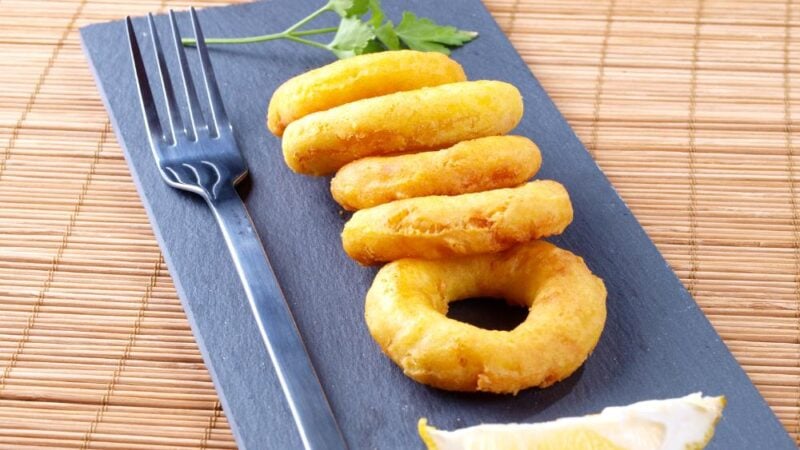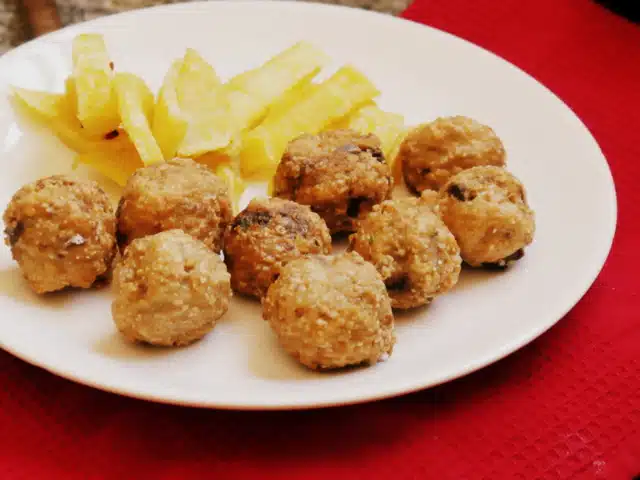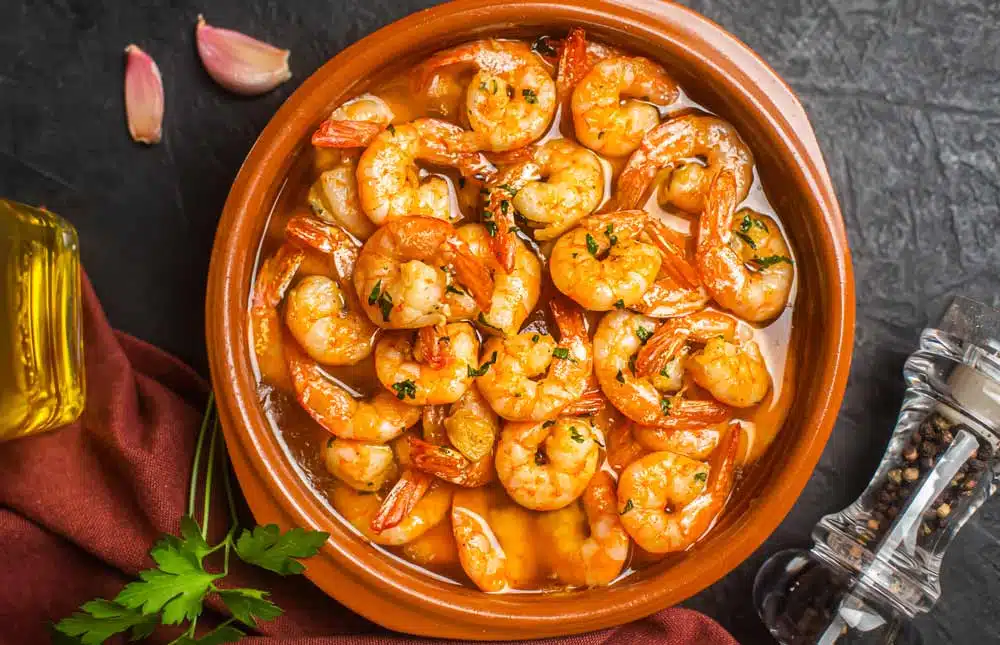Welcome to Paulina Cocina! Get your beer or whatever cool drink you like ready because this recipe is going to call for something like it. Crispy, tender, seasoned, and full of the sea, this Roman-style squid recipe is one you'll eat, eat, and keep eating.
Fried calamari or breaded calamari are worth trying at home. Stop thinking things like "they'll turn out oily or ugly," because none of that will happen after reading this.
Content table
About the Roman-style squid
What is this crispy delicacy called Roman-style calamari?
Calamari alla Romana is a culinary term that refers to a way of preparing squid, specifically the culinary style that originates in the Mediterranean region, especially in Italian and Spanish cuisine.
Although the term "Roman style" might lead one to think that it has an origin in the cuisine of ancient Rome , it is actually more closely related to the technique of battering and frying food, which is a common characteristic of this preparation.
Breaded squid, also known as Roman-style squid, is commonly served as an appetizer, tapa, or main course and is appreciated for its seafood flavor, crispy texture, and versatility.
How are breaded squid known as “Roman style” made?
Preparing squid Roman style involves cutting the squid into rings or strips, which are then coated in a mixture of wheat flour and, in some cases, corn flour, seasoned with salt and pepper.
This coating adheres to the squid after it is dipped in a liquid mixture that usually includes beaten egg and cold water.
The battered squid is then fried in hot oil until golden brown and crispy.
Calamari is usually served it a touch of freshness and citrus.
They can also be accompanied by sauces such as tartar sauce or aioli to add flavor and variety.

Essential tips for making perfect Roman-style squid
To prepare calamari a la romana , you need fresh calamari or calamari rings, wheat flour, corn flour, salt, black pepper, sweet paprika, egg, and cold water. These ingredients combine to create the perfect batter.
- The batter is an essential part of the recipe . It's made by mixing wheat flour and corn flour with salt, pepper, and sometimes sweet paprika.
- The result is a dry mixture that sticks to the squid after dipping it in a liquid mixture.
- The liquid batter consists of beating an egg and mixing it with cold water . This creates a lighter texture and helps the coating adhere better to the squid.
The breaded squid is fried in hot oil until golden brown and crispy. It's important that the oil is at the right temperature for optimal results.
Squid rings, calamari rings or fried calamari?
While squid is the star of the traditional version of this dish, you can also find variations that use other types of seafood.
Two of the most popular are “Roman-style squid rings” and “Roman-style calamari rings.”
Roman-style cuttlefish rings are usually larger and more tender, providing a different bite experience. Roman-style squid rings, on the other hand, are smaller and offer a greater amount of crispy coating in each bite.
These preparations follow the same basic technique, but instead of calamari, they use giant squid rings or smaller squid rings. Both variations are appreciated by seafood lovers and are equally delicious.
Name and origin of Roman-style squid
Calamari a la romana , despite bearing the reference "Roman style" in its name, has no specific creator in culinary history. This dish is the result of the evolution of culinary techniques and the influence of various cultures over time.
The technique of coating and frying food, which characterizes the recipe for Roman-style squid , has its roots in Mediterranean cuisine.
This region has historically been rich in seafood production, including squid, so it's only natural that various ways of preparing it would develop.
The reference to "Roman style" might lead one to think that this dish originated in ancient Rome, but in reality it has more to do with the cooking technique than with a direct historical link to Rome.
Frying was a well-established cooking technique in ancient Rome, and they are known to have fried various types of food.
However, the modern version of Roman-style calamari , which includes batter, is more recent and was developed in the modern era in Mediterranean regions, particularly Italy and Spain. It is also associated with recipes for squid rings and Andalusian-style calamari .
Tips for using frozen squid
- Defrosting Squid : The first and most important thing when working with frozen squid is to make sure it's defrosted properly. You can do this in several ways:
- Refrigeration : Place frozen squid in an airtight container and refrigerate for several hours or even overnight. This is the safest way to thaw, as it prevents sudden temperature changes and maintains the quality of the squid.
- Rapid Defrosting : If you're in a hurry, you can use the rapid defrosting method. Place the squid in a sealed plastic bag and submerge it in a container of cold water. Change the water every 30 minutes until the squid is completely thawed. This method is faster than refrigeration but requires constant supervision.
- Drying the Squid : Once the squid is thawed, it's important to dry it properly with kitchen paper. Removing moisture from the surface will help the coating adhere effectively. For recipes without coating, such as squid casserole in red wine, this step is not necessary.
Now we're ready to make our own homemade calamari! Let's see what the recipe looks like.
Follow on Instagram ( here )
and on YouTube that I upload new videos every week ( click here )
Recipe for Roman-style squid
Yield : 4 portions
Preparation time : 45 minutes
Ingredients
- 500 gr of squid (fresh or frozen)
- 1 cup of wheat flour
- 1/2 cup corn flour
- 1 teaspoon of salt
- 1/2 teaspoon ground black pepper
- 1/2 teaspoon of sweet paprika
- 1 egg
- 1 cup of cold water
- Frying vegetable oil
- Lemon
- Tartar sauce or aioli
Steps to make Roman-style squid
- If using whole squid, clean by removing the skin, cartilage, and beak. Then cut into rings or strips, according to preference.
- In a large bowl, mix the wheat flour, corn flour, salt, black pepper, and sweet paprika. In another bowl, beat one egg and mix it with one cup of cold water.
- Dip each piece of squid into the liquid mixture and then coat it in the flour mixture. Press lightly to ensure the coating adheres.
- Heat enough vegetable oil in a deep frying pan to 180°C. Fry the squid until golden brown and crispy for 2-3 minutes.






